Family : Chaetodontidae

Text © Giuseppe Mazza

English translation by Mario Beltramini
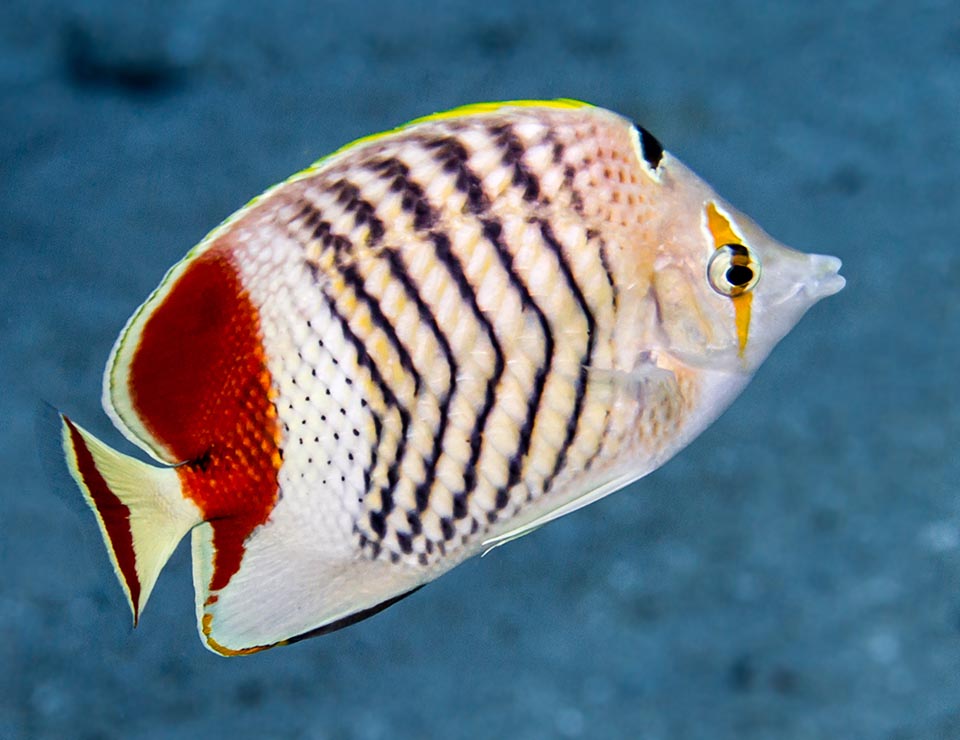
The Eritrean butterflyfish lives in the tropical waters of the Indian Ocean, mainly in the Red Sea and in the Gulf of Aden © Brian Cole
Eritrean butterflyfish (Chaetodon paucifasciatus Ahl, 1923) belongs to the class of the Actinopterygii, the ray-finned fishes, to the order of the Perciformes and to the family of Chaetodontidae.
For some, it should be a subspecies of Chaetodon madagaskariensis Ahl, 1923, along with the Chaetodon xanthurus Bleeker, 1857 and the Chaetodon mertensii Cuvier, 1831.
The name of the genus Chaetodon comes from the Greek “χαίτη” (khaite), hair, and “ὀδούς” (odous), tooth, due to the “bristle-shaped teeth”.
The species name paucifasciatus means, in Latin, “with few bands”.
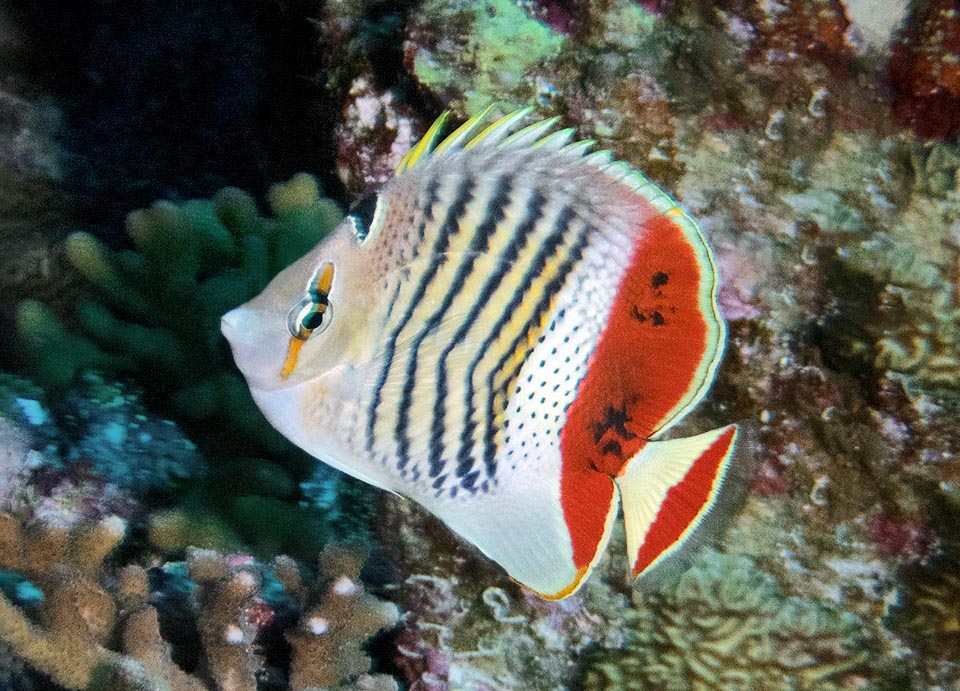
Up to 14 cm long, roundish when stretching out fins to seem bigger, it frequents the inner part of the reefs, but can also go down on the outer side up to 60 m © Paddy Ryan
Zoogeography
It lives in the tropical waters of the Indian Ocean, mainly localized in the Red Sea and the Gulf of Aden.
Ecology-Habitat
It is common in the plain part of the madreporic formations, but it can go down also along the borders of the reefs up to about 60 m of depth.
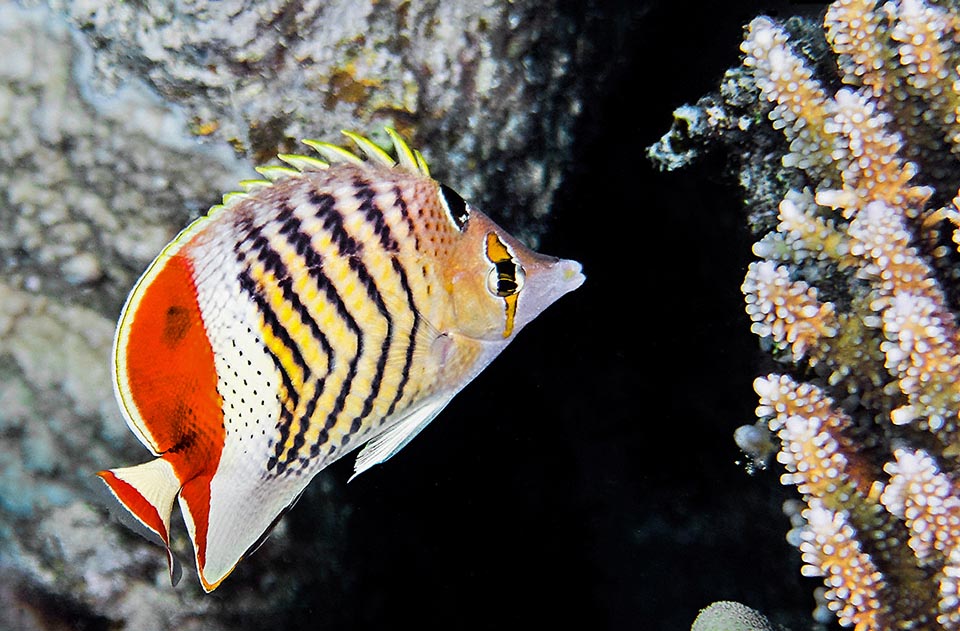
It eats polychaetes, small crustaceans and algae with a particular preference for the polyps of the gorgonians and of the madrepores © Rafi Amar
Morpho-physiology
It does not exceed the 14 cm. The body is flat, more or less squared, with the snout slightly elongated for looking for food among the corals. The dorsal fin has about 12 spiny rays and 20 soft; the anal has 3 spiny rays and about 18 soft. The ventral and the pectoral ones are unarmed. The caudal is more or less blunt.
Like Chaetodon madagaskariensis it has rigid yellow dorsal fins, the white-edged spot on the head and the black slanted traits folding backward at the height of the eye, forming parallel angle brackets, which, at the end, transform in lined small dots.
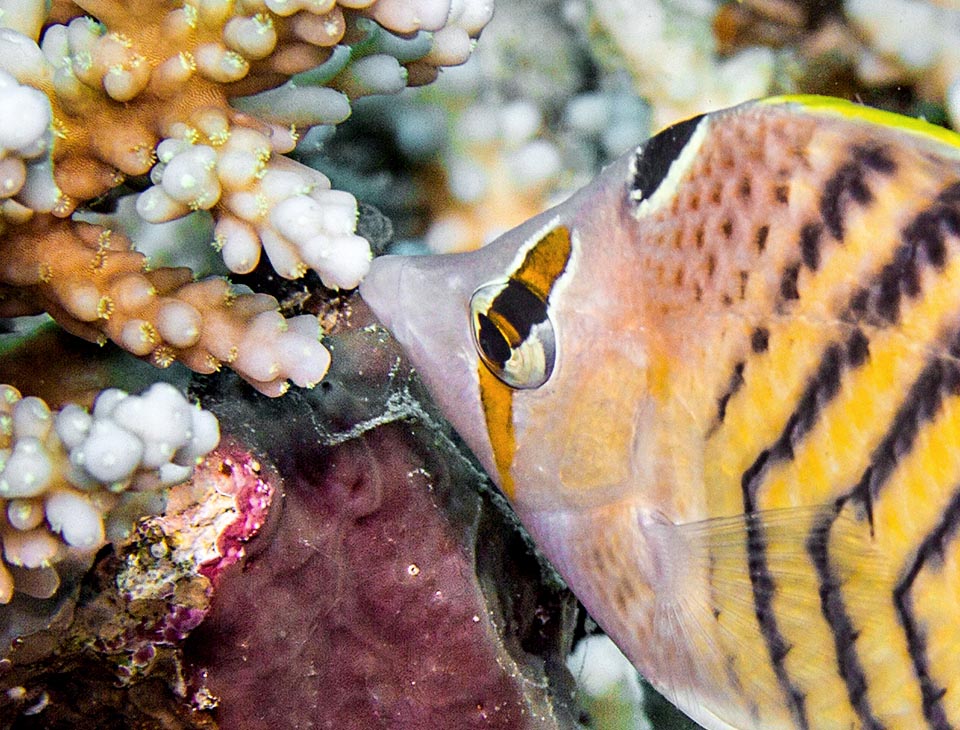
Here is the greedy at work, while eats them cleverly helped by the long snout, leaving no time to the madrepore to pull them back © Brian Cole
The eye is not masked by a black stripe, but by a brown band, which, however, performs the same camouflaging function. Also the pattern on the caudal and the soft parts of the dorsal and anal fins is analogous to the Madagascar butterflyfish, but here it is decidedly redder with black spots.
Ethology-Reproductive Biology
The Chaetodon paucifasciatus nourishes of madrepores polyps, gorgonians, polychetes and small crustaceans, but also of algae, and it’s thanks to this varied diet that it resists better than other species to the degradation of the reefs connected with the climate changes.
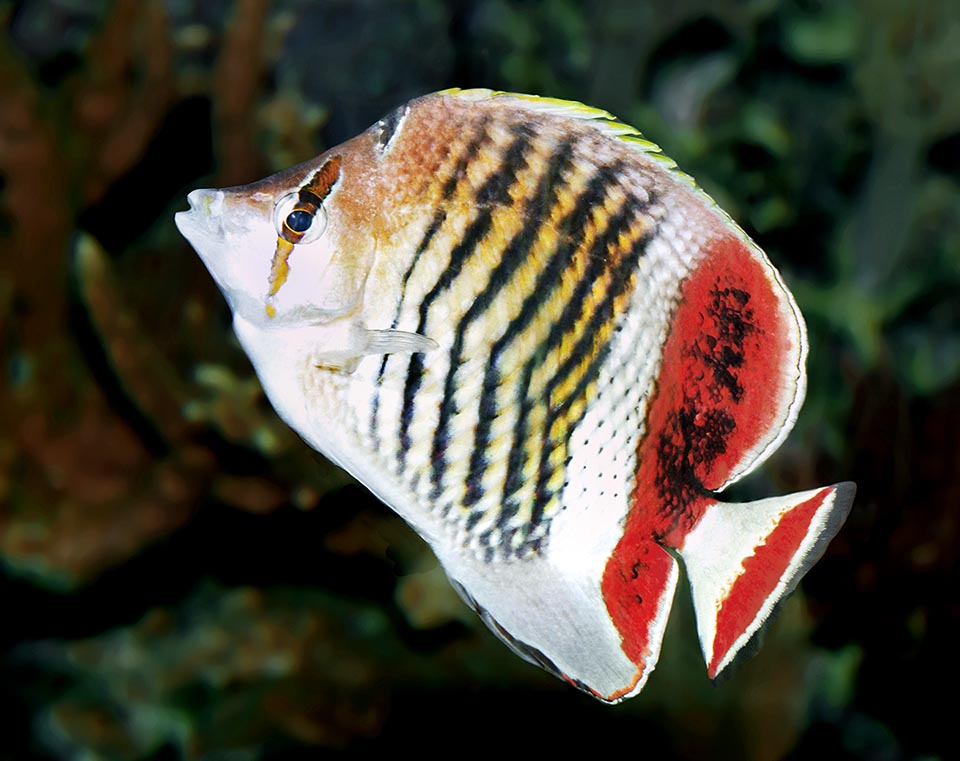
It’s true that with the climate changes in some sites the madrepores are declining, but it is not fished and thanks to its varied diet it will never be an endangered species © Giuseppe Mazza
It is therefore not an endangered species, especially since the populations can double in less than 15 months and the fishing vulnerability index is very low, just 10 on a scale of 100, given that, apart from the aquarium trade, it is not hunted by man.
It lives in small schools, very often paired. After having spawned and fecundated the eggs, abandoned to the currents, the parents, usually, do not separate.
Synonyms
Chaetodon chrysurus paucifasciatus Ahl, 1923.
→ For general information about FISH please click here.
→ For general information about BONY FISH please click here
→ For general information about CARTILAGINOUS FISH please click here.
→ To appreciate the BIODIVERSITY of BONY FISH please click here.
→ To appreciate the BIODIVERSITY of CARTILAGINOUS FISH please click here.
